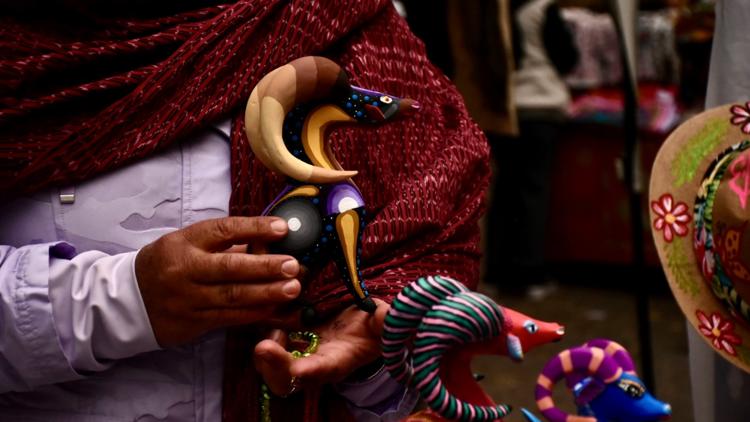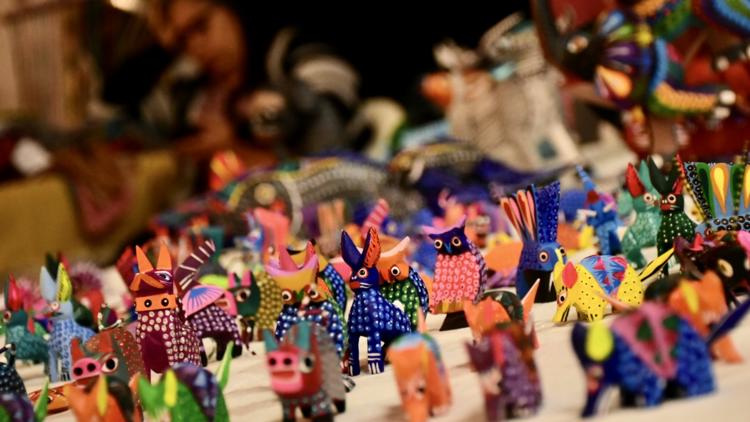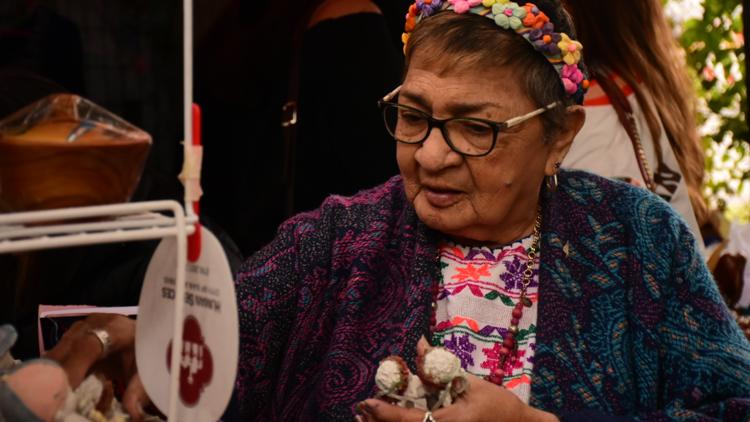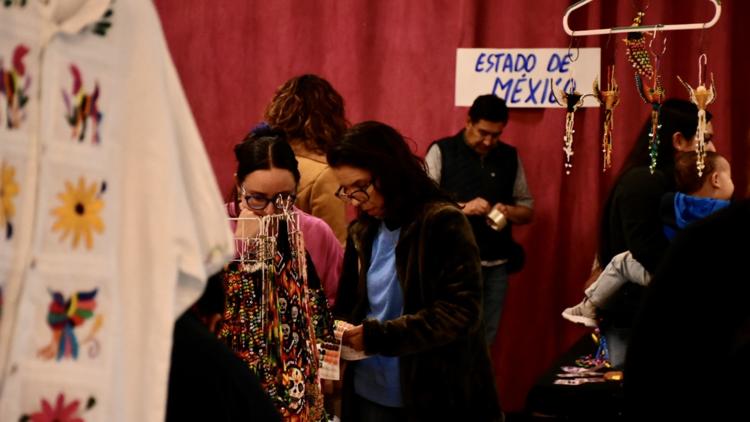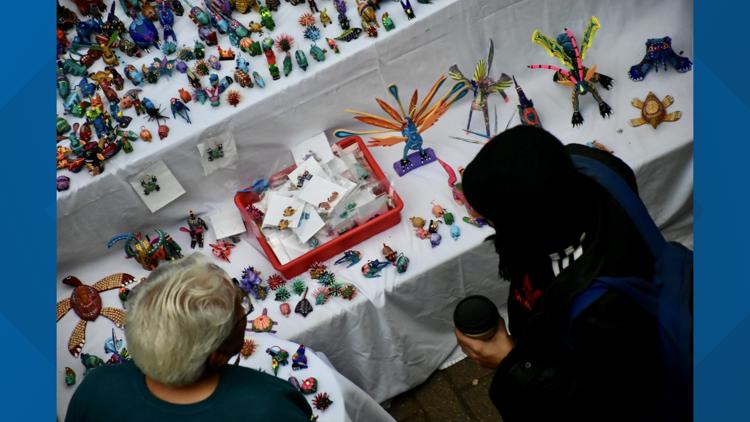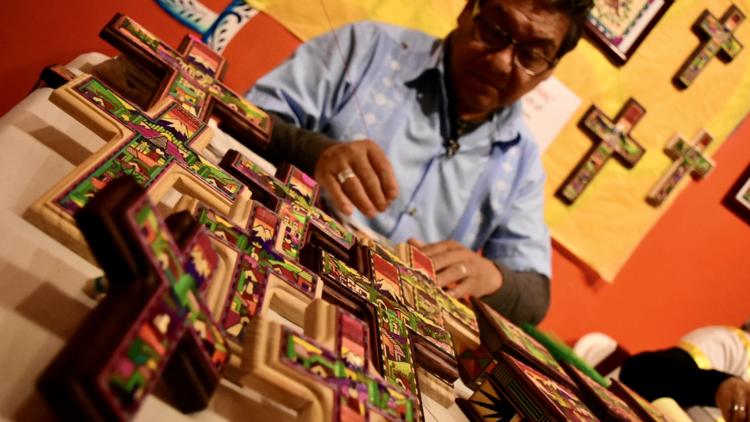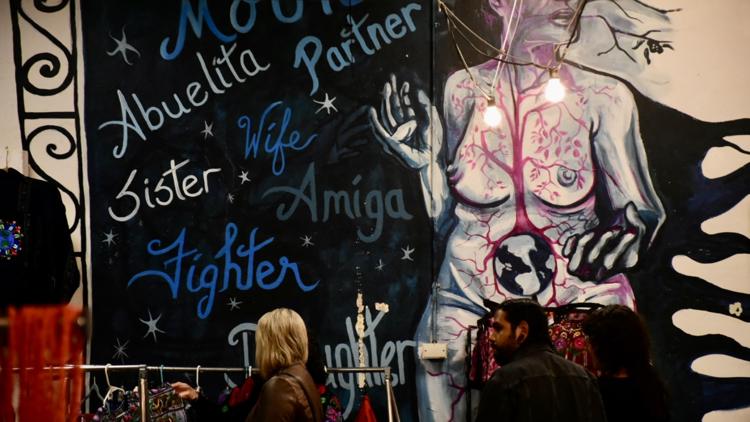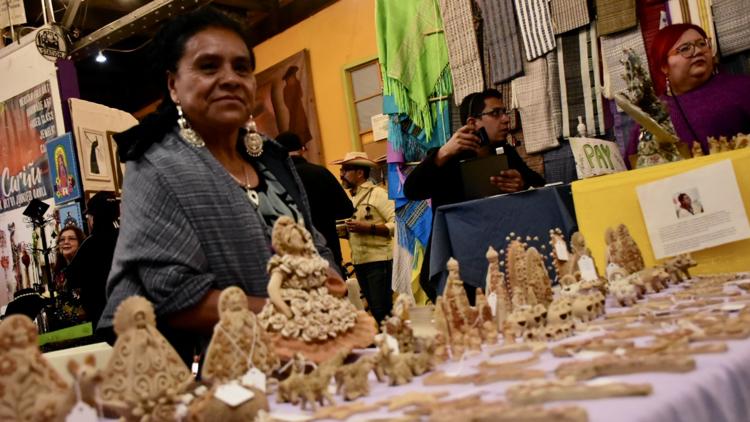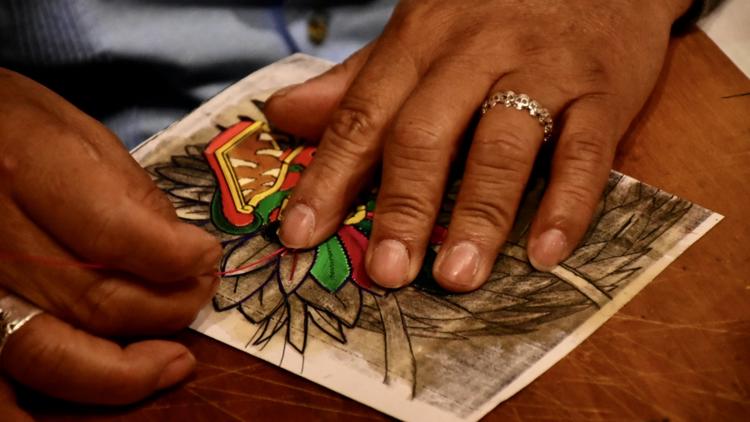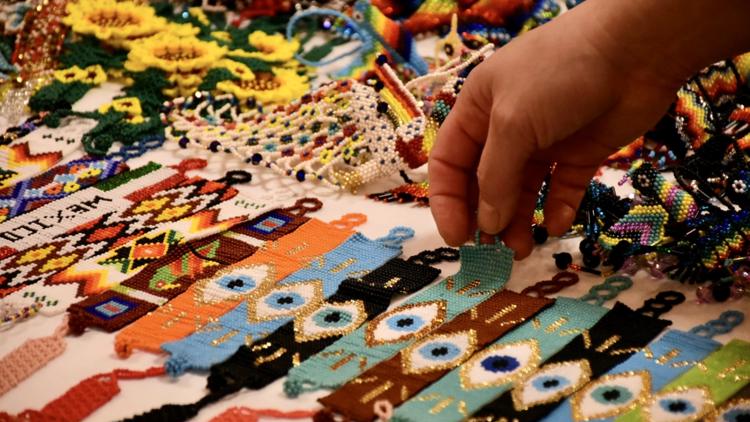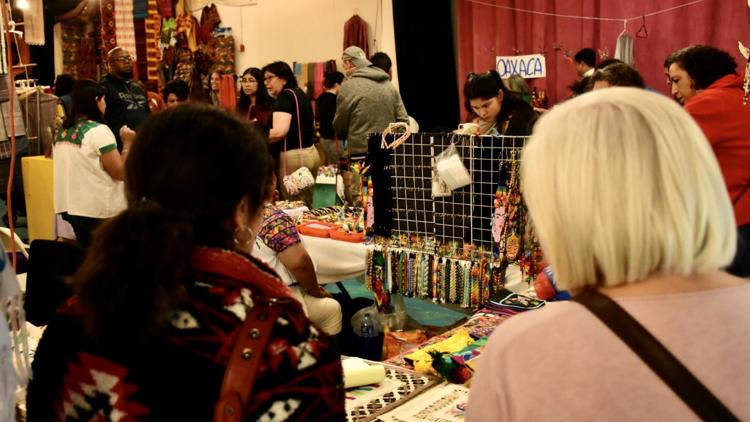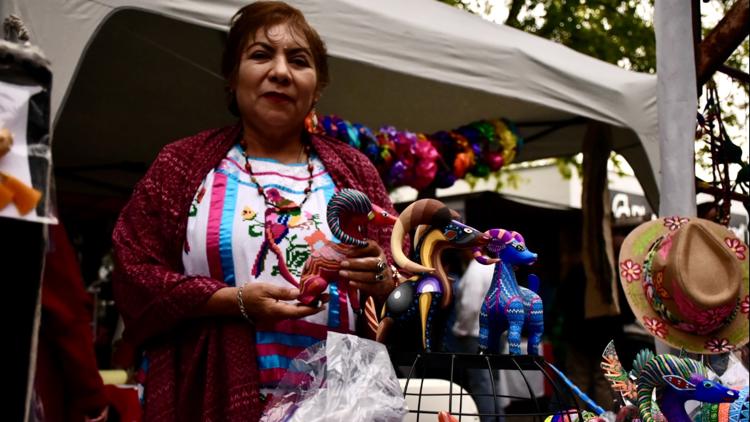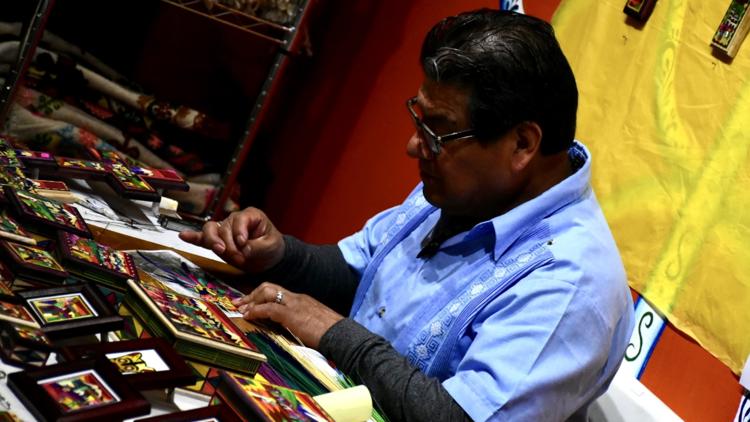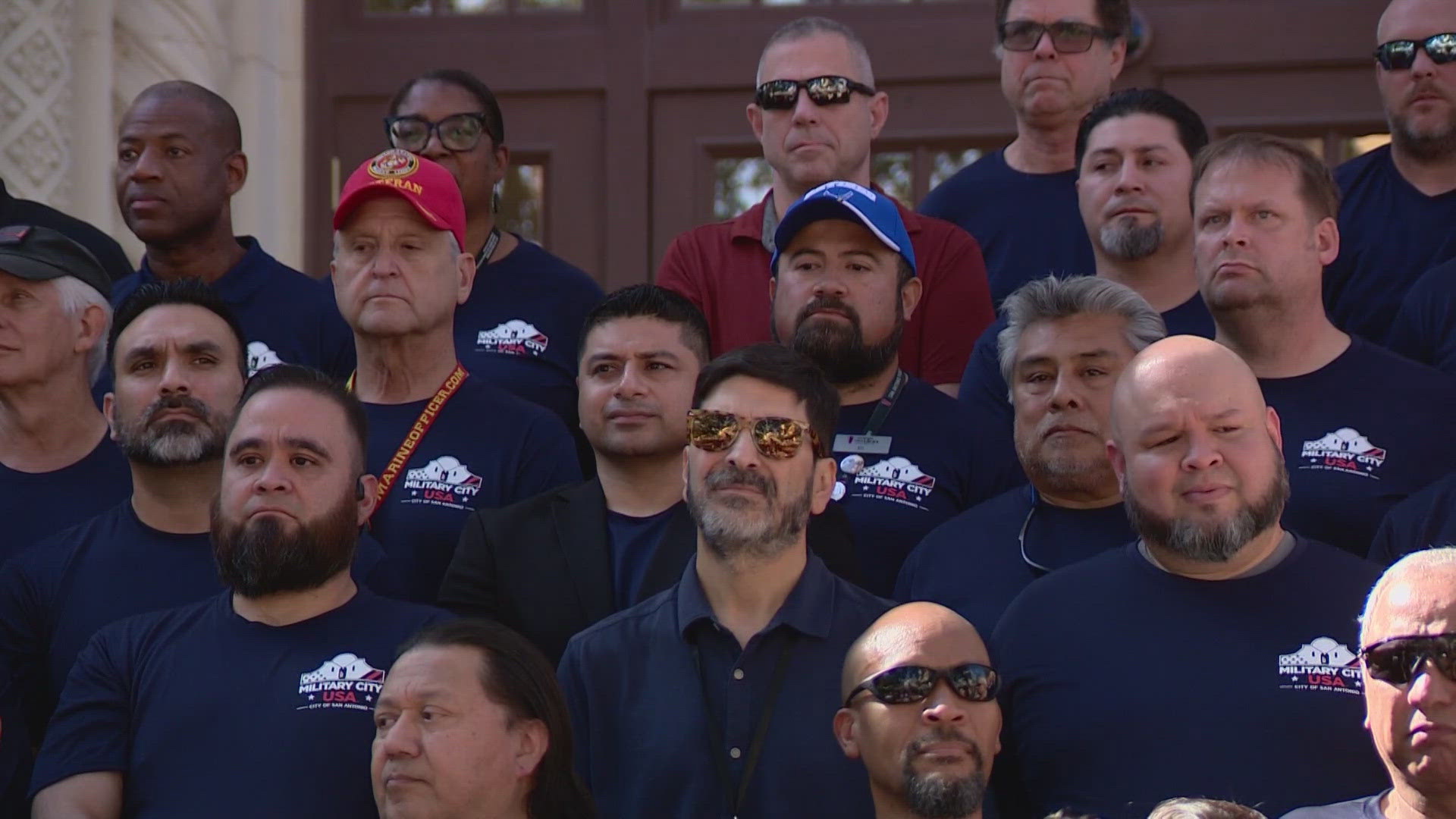SAN ANTONIO — At the annual Mercado de Paz, concluding Sunday at the Esperanza Peace and Justice Center, visitors shop for wares from jewelers, authors and painters from all corners of the Alamo City.
They can also peruse rows upon rows of Oaxacan alebrijes, watch as Mexican popotillo artists create delicate mosaics of straw and negotiate prices over colorful pieces of Guatemalan neckwear (so long as they can pick one out of the vast selection set up in a corner upstairs).
Staff at Esperanza (located at San Pedro and West Evergreen, just south of San Pedro Springs Park) say the 34th edition of the annual market features nearly 70 vendors, about half of whom come from other countries. Many of those travelers are familiar faces who make it a point to return year after year, citing the kindness and curiosity of local shoppers who stop by their tables.
"San Antonio customers like seeing how we create our work," Marta Patricia Garcia, a straw artist from Mexico, told KENS 5 in an interview conducted in Spanish. "We're sharing and demonstrating our process."
That process is often as engrossing as the final products themselves. For Garcia, it's born from family tradition and starts with collecting plants from volcanoes; resin from trees will be used for adhesive. Then, they set about gluing bits of colorful straw to miniature canvasses.
Bit by bit, an image starts to form: It could be a fantastical creature, a landscape or a farmer taking a drink of water. From afar they could be mistaken for a painting, until you get nearer and notice the texture of the material used.

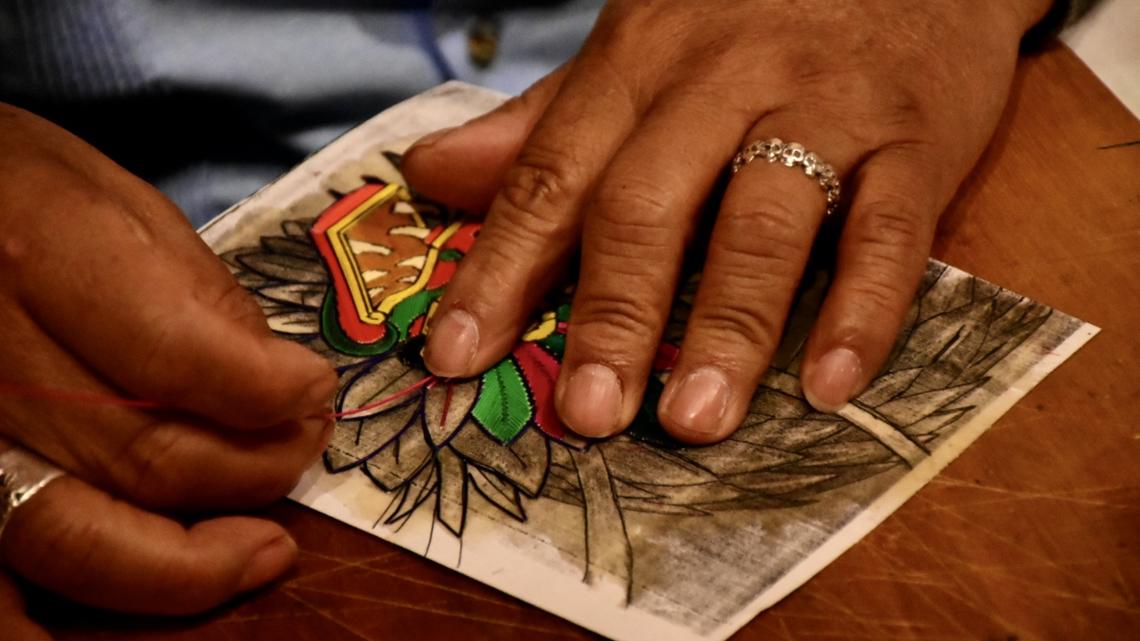
Other booths at Mercado de Paz, which begins on West Evergreen Street before continuing into two levels inside Esperanza, offer wearable garments, ceramic works, beaded bracelets... or the opportunity to chat with a nationally renowned sculptor refining a centuries-old process.
Enedina Vasquez Cruz says she has been coming to Esperanza's Mercado de Paz for years. Also in that time, she's won local, national and international distinctions in Mexico for her distinct and detailed clay figurines.
"It's a process that was being utilized long before the Spaniards arrived in Mexico," Cruz said, adding that while she travels to other U.S. states to sell her work, Esperanza's market is a standout. "This is a very nice market, one where we find a lot of Spanish-speaking customers. It's very unique. Me encanta regresar—I love to come back."

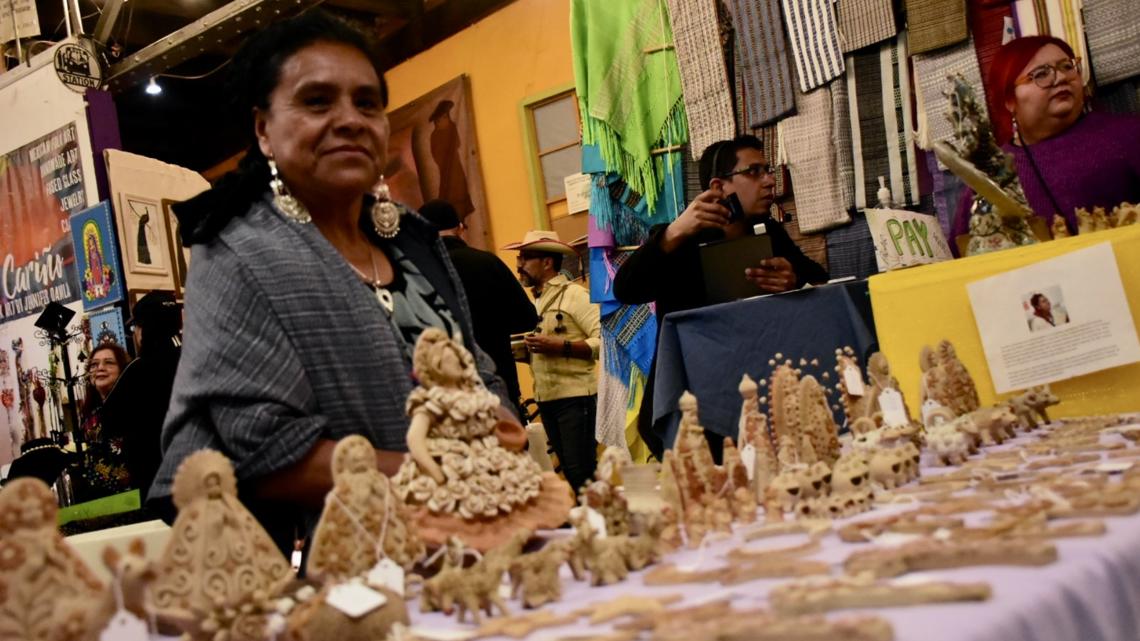
'It humanizes everybody'
Also motivating these international vendors to make the trip back every holiday season is the mission of their host organization. Founded in 1987, the Esperanza Peace and Justice Center is a grassroots nonprofit that promotes open, healthy dialogue among community members.
Esperanza staff say they do what they can to support vendors' travels to San Antonio, citing value from a social justice perspective in bringing different arts, cultures and traditions together under one roof for Mercado de Paz.
"We want to break hatefulness and push our communities to be more loving and respectful," said Graciela Sánchez, director of Esperanza. "(Customers) see these artisans, they meet with them, they see the quality of their artistry... I think it humanizes everybody instead of the stereotypes we've been hearing."
Astrid Dueñas, a Colombian jewelry designer, echoed that sentiment. She says she and her family, now based in Austin, were driven by the possibility of sharing their culture through their work.
Over the pandemic, Dueñas says, her family started collaborating more closely with Colombian artisans whose livelihoods were threatened by a lack of in-person markets. For her, Mercado de Paz isn't just about selling items; it's about supporting a mission of tighter-knit communities.
"San Antonio is a welcoming city... that's why I like to come here, not just to this mercado," she said. "I feel like people appreciate not just my pieces, but me as an artist."
Community as well as commerce
Though the market provides an opportunity for San Antonians to buy unique holiday gifts for loved ones while avoiding the commercialized hassle typically associated with Black Friday, participants say live music, comradery and a casual atmosphere help create the sense that Mercado de Paz is as much about community as commerce.
Esperanza volunteers offer golf cart rides to the nearby parking garage. Vendors are eager to discuss their process. Conversations overlap; shoppers eyes widen at the variety of styles on display; and, for at least one 83-year-old seller of "hidden treasures" enjoying her final market after two decades, diversity conjures up appreciation.
"It's wonderful to see what other people can do," said Mary Helen Abrams, who said her own uncle would sell relics in front of a church in Mexico. "I'm 83, I'm slowing down. (But) I'll still come by."
PHOTOS: Community blends with commerce at 34th annual Mercado de Paz
Leti Guerra, a local artist who sells her jewelry and other crafts through BraveBird, attends various pop-ups in town, but said she appreciates the opportunity to see what international vendors are creating through Esperanza's market.
"It amazes me the trek they make," said Guerra. "I just love seeing the artwork everybody brings... sometimes I feel humbled. It's wonderful to be among these great artists."
Mercado de Paz concludes on Sunday, when the market will run from noon to 5 p.m. But community members who miss out on an eye-catching piece of art or handmade blouse made by an international vendor can rest assured: They'll likely be back next year.
Certainly Cristina Antonio expects to be back; she's been making the trip to Esperanza with her alebrijes from Oaxaca for more than 20 years.
"It's all in the name: Esperanza gives hope to us artists," she said. "They give us the opportunity to come here. Alebrijes are tradition for us, and they're rescuing our art."
>TRENDING ON KENS 5 YOUTUBE:


